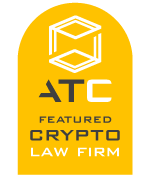
As the sun sets on 2018, I hear echoes of what optimists have been saying about cryptocurrencies over the past several years, that they are to blockchain what email is to the internet: the first use case, but certainly not the only use case. Lately much of the news has been focused around the falling price of cryptocurrencies and not so much the expanding uses of the technology, which becomes more apparent with each passing day.
At the beginning of this year I published the article “Blockchain and Cryptocurrencies in 2018: The Good, the Bad and the Ugly“, in which I tried to predict what would happen this year. Much of what I predicted, including the massive shakeout/correction, securitization of crypto assets and continued regulatory struggles have come true. Later in the year, I published the article “Cryptocurrencies, Blockchain and ICOs: What to expect in the Second Half of 2018” in which I talked about the apparent regulatory risks and development of the industry. Now, at the end of the year, the world has truly shifted, driven by the declining prices of cryptocurrencies and the increase in private, as opposed to public, raises and enterprise blockchain solutions. Confidence has declined as the blockchain projects of 2016-2017 have produced little to no tangible use cases or results.
What we are witnessing now is a massive shake out. All the players who came into the space who have not delivered or have delivered shoddy projects are thankfully disappearing. The shakeout is not one that is limited to blockchain projects; many of the ancillary industries related to the pump-and-dump type crypto projects, such as marketing and advertising companies, crypto funds and commission sales promoters are quickly vanishing or pivoting into other industries (so watch out!) Although some people will suffer as a result of lost jobs, this is really no surprise given the fact that all reports indicate that we are heading into a recession that will effect jobs across all industries. One of the ancillary benefits of this shake out though is that with less white noise in the form of massive social media campaigns perhaps the truth, the real information that people are craving, will now come to light. That information will focus more on extolling the virtues of blockchain technology rather than specific tokens which do not have a use case. In other words, the question of “why a token” is obsolete since the answer to that question should be self-evident in its use case.
Many people have been waiting for, actually craving, stabilization. The industry after 2018 will stabilize. We now know the parameters of the regulation and regulatory enforcement, and predicting that enforcement has led to more conservative approaches to raising for blockchain-based projects. The trend now is private enterprise solutions for the technology as opposed to public ICO’s. The result was massive public scrutiny, ludicrous public raises and a crash in prices that directly reflects the lack of confidence people have in those who sought to promote projects in 2016 and 2017 that still have not delivered.
In fact, the regulatory onslaught is largely, and in fact squarely, a result of those projects which raised in 2016 and 2017 but which have produced little to no results. Although many of those projects did develop throughout that time, they also spent millions flying around the world spending freely on travel and parties under the guise of “promotion”. The real “bubble” that burst this year was conferences. With the decline of conferences and public raises we will see an increase in private enterprise initiatives and educational institution research and publication to once again legitimize the technology and its uses. My hope is that this will also result in a return to actual development and real white papers that are not marketing documents.
At first the reputation of the technology was that it was used on the black market, a nefarious reputation that took time to shake off. Now we have a new dark public perception to shake off, that of vapid marketing and fraudulent capital raises. It will take some time for the general public to regain confidence in the use of this technology, which will come from actual use cases. The days of raising and promoting with just an idea or an MVP are over. Results will now dictate the future of this technology.
Aaron Grinhaus LL.B., J.D., LL.M (Tax) is an experienced business and tax lawyer, author and consultant who has developed a niche expertise in the use of Fintech strategies, including the use of blockchain technology, smart contracts and cryptocurrency. His law firm (grinhauslaw.ca), a boutique firm located in Toronto, was one of the first firms in Canada to publicly advise on the practical uses of blockchain and shared ledger technology, and frequently advises on initial coin offerings, crypto investment funds, crypto mining operations and structuring high-net worth crypto investors. He is faculty with Osgoode Hall Law School’s Blockchain Certificate Program and is the author of the legal text “A Practical Guide to Smart Contract and Blockchain Law” (LexisNexis: 2019). Please call or email us to see how we can help.
PLEASE NOTE: THIS IS NOT INTENDED TO BE LEGAL ADVICE AND SHOULD NOT BE RELIED ON AS SUCH. IT IS IMPORTANT THAT YOU CONSULT WITH A LICENSED PROFESSIONAL.





